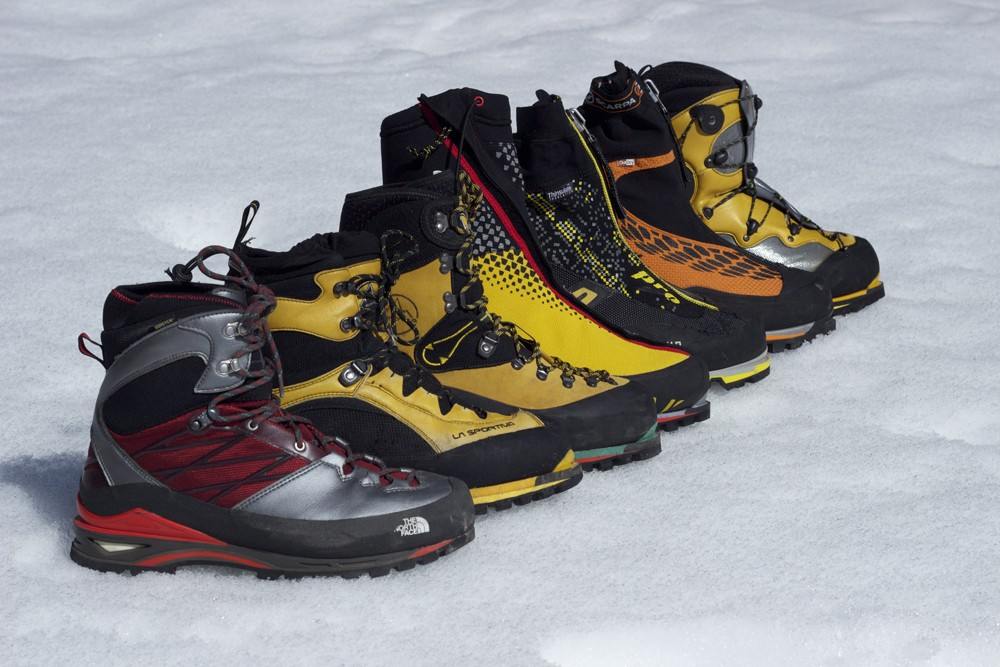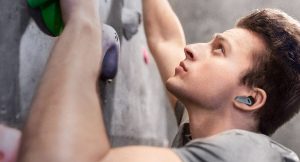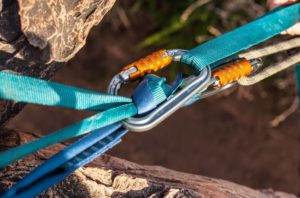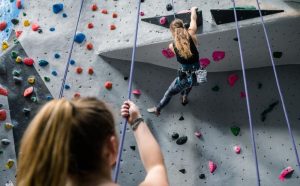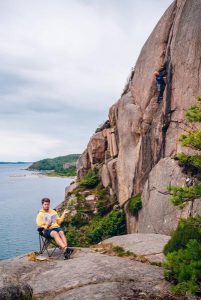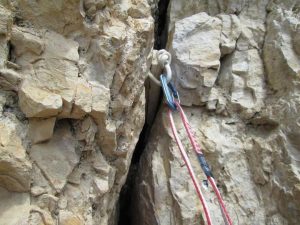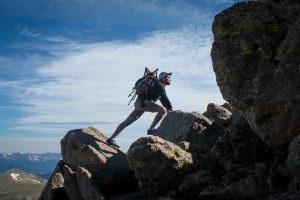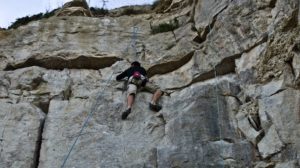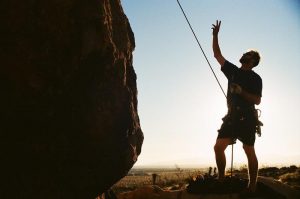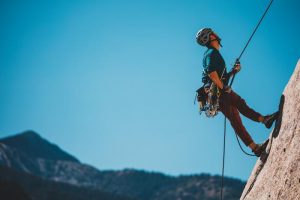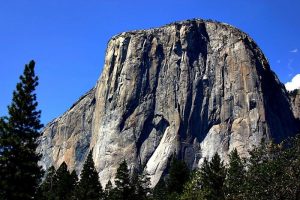We tested eight of the best mountaineering boots ever made, including some of the latest and greatest, and some tried and true performers. We wore these boots to climb ice, snow, rock, and choss from Patagonia to the Ruth Gorge. We discovered the best boots for multi-week Alaska expeditions and for redpointing single day mixed test-pieces, for climbing single pitch WI6 horror shows to multi-week alpine sufferfests.
We measured weight, warmth, waterproofness, durability, and the ability to climb ice and rock. We also considered how well a boot will handle the approach whether it be a ten-minute boot pack or a two-day ski.
Best Overall Men’s Mountaineering Boot: La Sportiva Spantik
- Ease of lacing
- Plenty warm for anything under 8,000 meters
- Supportive enough for touring on approach skis
- Walks and climbs like a much lighter weight boot
- Cuffs can bite after miles of skiing
- Heavier than the competition
Our Top Pick was the La Sportiva Spantik which is a lightweight double insulated boot, suited for multi-day assaults on peaks under 8000 meters. The Spantik is insulated in both the inner boot and outer shell, providing the highest level of warmth of any boot we tested. We feel that the Spantik is as much of a game changer in the category of insulated double boot as our Best in Class winner the Batura 2.0 is in the super-gaiter category. The Spantik is the gold standard in the Alaska Range, from Denali to the Mooses Tooth, since it is not only extremely warm but climbs hard rock and ice like a much lighter boot.
Best Budget Boots: La Sportiva Nepal Evo
- Stiff and supportive
- Metal grommets and durable leather
- Excels at ice climbing
- Uncomfortable tongue pinches top of foot
- Stock laces don’t stay tied well
Our Best Budget pick goes to the La Sportiva Nepal EVO, which is our pick as the most durable boot. The Nepal is made of 3.2mm Perwanger leather which showed no signs of wear during our review, and we expect them to last for seasons. The Nepal also uses the industry gold standard Gore-Tex lining to keep your feet dry. While the Nepal is not the absolute least expensive boot we reviewed, it will likely last the longest, which makes suitable for schools or clubs looking for a rental fleet of mountaineering boots. If you are looking to get the absolute best value for your money, the Nepal is your boot.
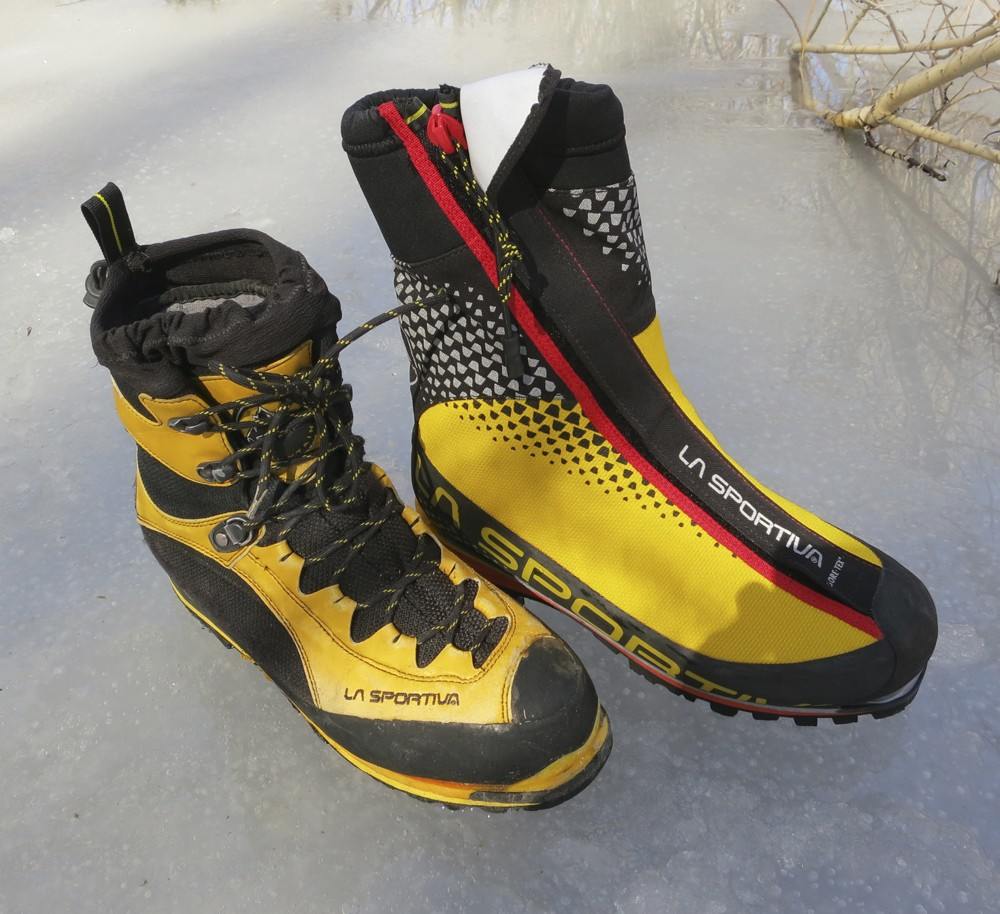
Table of Contents
Choosing the Best Mountaineering Boot
Weight
An old adage says that the weight of your foot is equal to many times that much weight out of your pack. Regardless of what multiplication factor you use to calculate the gains, it is undeniable that the weight of your gear is a factor when mountaineering. Lighter is better, all other factors being the same. Lighter gear is opening up new possibilities, not just for the elite alpinists but for average climbers too.
We weighed all of our boots in comparable sizes using a digital scale and ranked them against each other. Our lightest test boot was The North Face Verto S4K, which is a great boot for warm weather mountaineering. We were most impressed with the La Sportiva Batura 2.0 GTX which is super-gaiter boot weighing less than many single boots but offers much more warmth and protection.
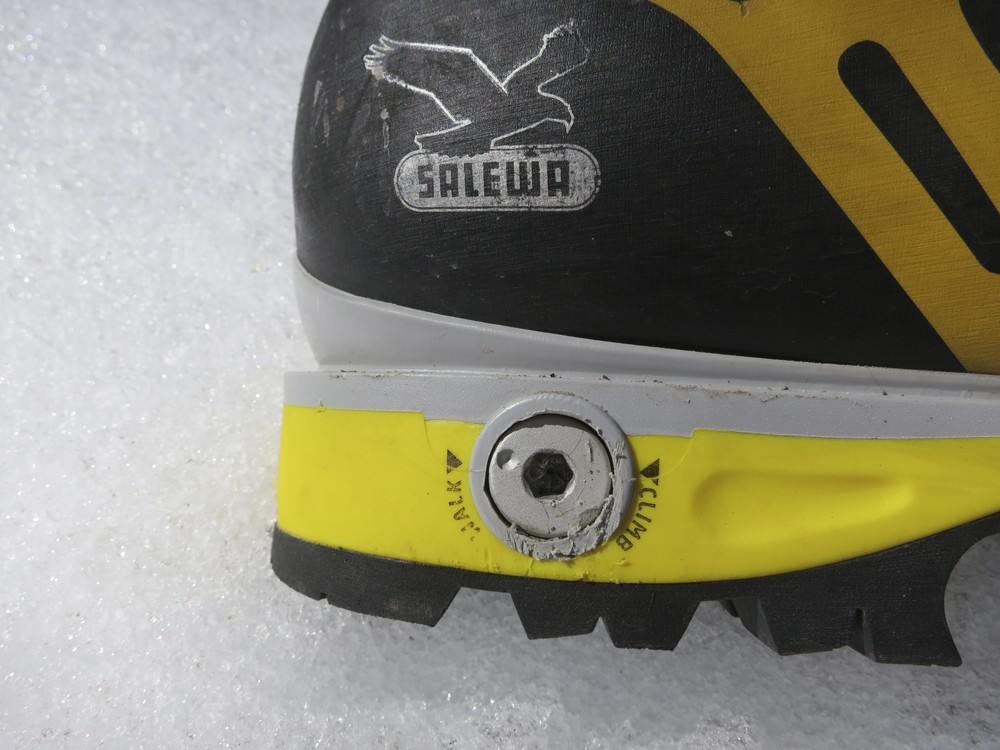
Rock Climbing Ability
Underneath all of that ice and snow in the mountains is a rock. While most of the boots we reviewed are designed with crampon climbing as a primary focus, we considered how well a boot will climb rock without crampons. We found that the major factor in climbing rock in boots is the amount of ankle flexibility the boot allows.
Other factors were sole rocker, toe profile, and thickness of the sole. For pure rock climbing, we prefer boots with a moderate amount of sole rocker, a narrow toe profile, and a thin sole. The less ankle support the better, for either fourth class or easy fifth, which is what we found ourselves climbing in the mountains without rock shoes.
Mountaineering boots typically edge very well due to the stiff platform of the rigid or semi-rigid sole. Where most boots lack in rock climbing ability is smearing and sensitivity. Experienced mountaineers develop ways to climb and move over the rock in rigid soled boots that are different from how they would in rock or approach shoes. For instance, pockets or cracks that you may use in rock shoes may be worthless to mountaineering boots, but tiny calf burning edges will feel solid underfoot in stiff boots.
The North Face Verto S4K was the lightest boot in our review, and we found that it climbed rock the most efficiently. This is due to a combination of the flexible lightweight upper and the flexible sole which allowed for a higher degree of sensitivity underfoot. We also found the Best in Class winning La Sportiva Batura 2.0 to climb dry rock extremely well due to its thin carbon fiber sole, which allowed the foot to be closer to the rock for better balance.
Ice Climbing Ability
Ice climbing ability is a measurement of a boot’s ability to climb ice and mixed with crampons on. The factors we considered were: if a boot had a fully rigid sole, how much the upper supported the ankle while frontpointing, if it accepted step in crampons, and how well those crampons fit the boot. Our test crampons were either Petzl M10s or the newer Petzl Lynx. All of the boots were tested using wire toe and heel bails except for The North Face Verto S4K. The Verto was tested using the Lynx with the included strap toe bail since the Verto will not accept a wire toe bail.
We favored boots with a fully rigid sole over boots with flexible soles because they make for a solid, supportive platform while front-pointing in vertical ice. We also favored boots that had both front and rear welts to accept step-in crampons, because we have found that wire toe and heel bails provide for more security and precision than strap attachments.
Our favorite boots for pure ice climbing were the Nepal Cube. While these boots vary greatly in warmth and levels of protection, they have fully rigid soles, toe and heel welts, and the perfect amount of ankle support for standing on front-points. The worst boot in the review for pure ice was The North Face Verto S4K, which lacks both a front toe welt or a rigid sole.
The lack of toe welt meant that the boot had to be fitted with a toe strap crampon, which we find to be less secure or precise than wire toe bails. We also found the Verto to sag greatly under body weight when standing on front points, which tired our feet and calfs quickly. The Verto is much better suited for less than vertical snow or neve than pure ice or steep mixed.
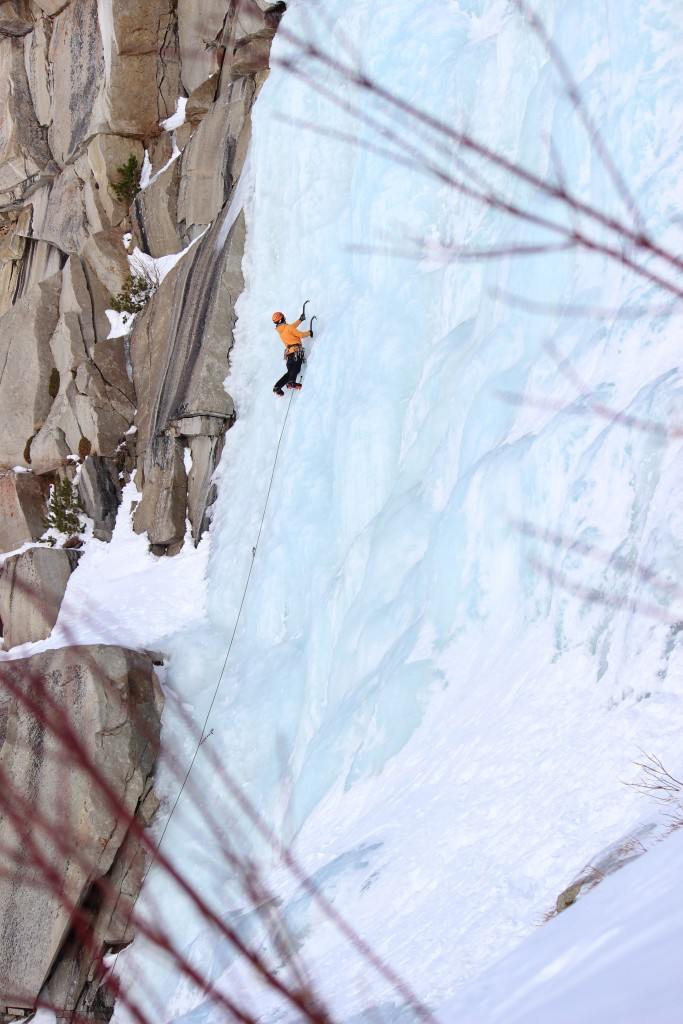
Hiking Ability
Alpine climbing and mountaineering usually involve a good amount of approaching before the real climbing begins. We wore these boots on both long and short approaches, and considered sole flexibility, ankle support versus restriction, and weight to measure how well they handled the approach. We tested these boots over approaches that varied from roadside ice in Colorado to full day hikes in Patagonia.
We found that the lightweight The North Face Verto S4K and the La Sportiva Trango Cube handled approaches the best due to their non-rigid insoles and flexible uppers. We would recommend these boot for moderate snow and neve climbs in the Sierra, where the approaches can be longer than the actual climb.
Since it has the innovative feature of a convertible walk/climb mode, we were surprised at how well the Salewa Pro Gaiter hiked when in walk mode, and then became completely rigid in climb mode. We think that the Pro Gaiter would be a great boot in the Canadian Rockies or Patagonia where the approaches are longer and the climbing is hard and steep, requiring a fully rigid boot.
Warmth
For many, warmth is the number one concern when selecting the perfect product. We wore all of our boots extensively in temps ranging from 60 above to 20 below, and evaluated how warm our feet were. We often wore two different boots at the same time to objectively compare them. (This earned us some funny looks.)
One day while climbing ice in Lake City, Colorado with a La Sportiva Nepal on one foot and a Salewa Pro Gaiter on the other foot, we were stopped and questioned by other climbers. On this day we found that the foot in the Pro Gaiter was noticeably warmer than the foot in the Nepal.
We also found that a factor in a boot’s overall warmth is related to fit. We recommend a healthy amount of wiggle room in front of your toes. Certainly upsizing too much will sacrifice performance, but if you cram your feet into too small a size, your blood flow will be restricted, your feet will get cold, and you won’t send. See our Buying Advice to learn how to achieve a proper fit.
Waterproofness
To test the waterproofness we hiked and climbed through wet snow, slush, and dripping ice. It goes without saying that staying dry is the best way to stay warm, so we closely monitored when our feet got wet.
Many of the boots in the review use the industry standard waterproof/breathable Gore-Tex lining, which we found to keep our feet dry flawlessly. We highly recommend Gore-Tex as a waterproof boot liner. A few of the other boots use other waterproof/breathable membranes such as OutDry, which we also found to be completely waterproof.
The only boot that claimed to have a waterproof membrane and readily let in water was the La Sportiva Trango Prime. The absolute driest boot in the review was the La Sportiva Batura 2.0 which uses two layers of GoreTex, a waterproof zipper with storm flap, and has an extra high cuff.
Durability
Mountaineering boots aren’t cheap, so everybody wants to get the most from their investment. We used and abused all of the boots, and then inspected them for signs of wear. We also noted where they failed or appeared that they may fail in the future. None of the boots in our review had any total failures which made them unclimbable.
Our Best budget boot pick, the La Sportiva Nepal EVO GTX was our most durable boot in the review. The Nepal is constructed of thick Perwanger leather and uses metal lace hardwear which should last for years and years. The most disappointing failure was the from the La Sportiva Trango Prime which has fabric/leather lace loops that broke and forced us to modify the lacing pattern in the field. It should be said that we likely climbed more pitches in the Prime than any other boot in the review, which subjected it to more abuse than the others.
Value
We think that spending as much money as you can the first time around is important. Cold feet or getting a boot not designed for your objective will both shut you down. We think that spending the extra money on the boot that truly fits your needs is the best way to get the most from your money.
Conclusion
The boots in this review differ in weight, support, and function making it difficult to sort through the options. When choosing the best pair of mountaineering boots to buy, you first need to take into account what type of boot will best fit your mountaineering goals. We hope that the tests and observations written about in this review has helped you to sort through the different features to find the perfect pair for your feet.

